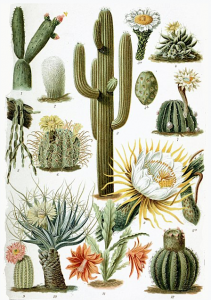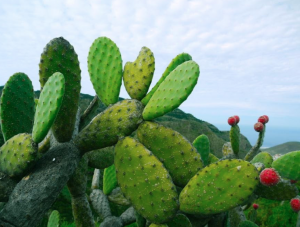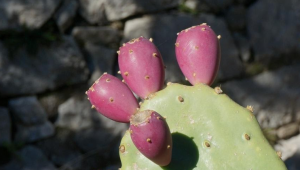Cactus for Diabetes
You may think of cactus plants as simply thorny, potentially problematic plants. However, once they flower and the flowers end up becoming beautiful fruits, the plant becomes a little more appealing. The desert comes alive.
The flower/fruit could be thought of as symbolic of hidden beauty in the plant. That hidden beauty is all the health benefits this plant is chock full of.
What About the Benefits of Cactus on Diabetes and Health?
The health benefits are found in both the leaves of the plant – called nopal cladodes – and the fruit.
Positive effects on human health from Opuntia species of cactus have been described since ancient times. Some of the reported benefits, including blood sugar regulation, include the following:
• diuretic
• anticarcinogenic
• anti-inflammatory
• anti-viral
• anti-spermatogenic
And in the last 10 to 15 years, there have been a lot of studies emerging in the medical data to suggest that cactus could be the next superfood, especially for diabetics. For diabetics, what you are looking for primarily is blood sugar regulation.
What Causes the Blood Sugar Lowering Effects?
One of the most effective blood sugar lowering medicinal ingredients found in cactus that has been tested is called ODP-1a, which stands for Opuntia dilleniid Haw-1a.
At Zhanjiang Normal University in China, researchers found that this component lowered all of the following (how cactus lowers blood sugar):
• food intake
• water intake
• fasting blood sugar levels
• total cholesterol
• triglycerides
• plasma urea nitrogen
• malondialdehyde
• glucose-6-phosphatase
All this shows blood sugar regulation
ability.
Simultaneously, the cactus ingredient raised levels of:
• body weight
• liver glycogen levels
• HDL-cholesterol levels
• superoxide dismutase levels in the liver
• glutathione peroxidase levels
All these things mentioned help diabetics and help build health and wellness.
The researchers stated that the medicinal ingredient in cactus works against high levels of blood sugar (blood sugar regulation) by protecting the liver form free radical damage and by maintaining tissue function.
Another Study Showed Cactus Blood Sugar Lowering Ability
In one study reported in the Journal of the Academy of Nutrition & Diet in 2014, the Mexican researchers first reported that the glycemic index of nopal was 32.5.
If you know about the Glycemic Index, you already know that carbohydrate foods are rated 0 to 100 based on the ability of the food to raise blood sugar levels. The higher the number rating, the more blood sugar that is released, raising blood sugar levels.
The glycemic index of nopal of 32.5 puts it in the low glycemic index food category. This makes it a suitable food to add to the diet of diabetics according to studies that focus on low glycemic index foods.
The researchers found some interesting facts:
-
When the type 2 diabetic patients ate either 50 grams of dehydrated nopal or glucose, they had less time when their blood sugar levels were high if they consumed the nopal. The actual numbers of the area under the curve for glucose was 287 compared to 443, or 65% less.
-
Then the patients ate either a high carb breakfast or a breakfast that was high protein (from soy). The breakfast was served either with or without 300 grams steamed nopal. The blood sugar peaks at 30 and 45 minutes after eating were significantly lower when the patients ate cactus.
There was an obvious connection between cactus and diabetes.
Incorporating Cactus Into Your Diet
Check with your knowledgeable health practitioner who understands about how cactus works to see if you should consider cactus for diabetes.
If the answer is yes, you can eat it fresh by purchasing the leaves at the store. Then slice up about ¼ cup of the pad and eat it raw or add it to cooked vegetable or wok dishes. It may also be added in salads.
Some health food stores may have dehydrated cactus but this is a little difficult to find. However, you can obtain cactus fruit jelly without sugar at www.ArizonaCactusRanch.com
One to two servings per day is all that is required.
Join Our Community
Archives
- January 2023
- December 2022
- September 2022
- August 2022
- June 2022
- May 2022
- April 2022
- March 2022
- February 2022
- January 2022
- December 2021
- November 2021
- October 2021
- September 2021
- August 2021
- July 2021
- June 2021
- May 2021
- March 2021
- September 2020
- August 2020
- July 2020
- June 2020
- May 2020
- April 2020
- March 2020
- February 2020
Subscribe

Sign up to receive FREE toolkit
From Dr. Hyman, #1 NY Times & Amazon Author
We never spam or sell your e-mail






Follow Our Every Move